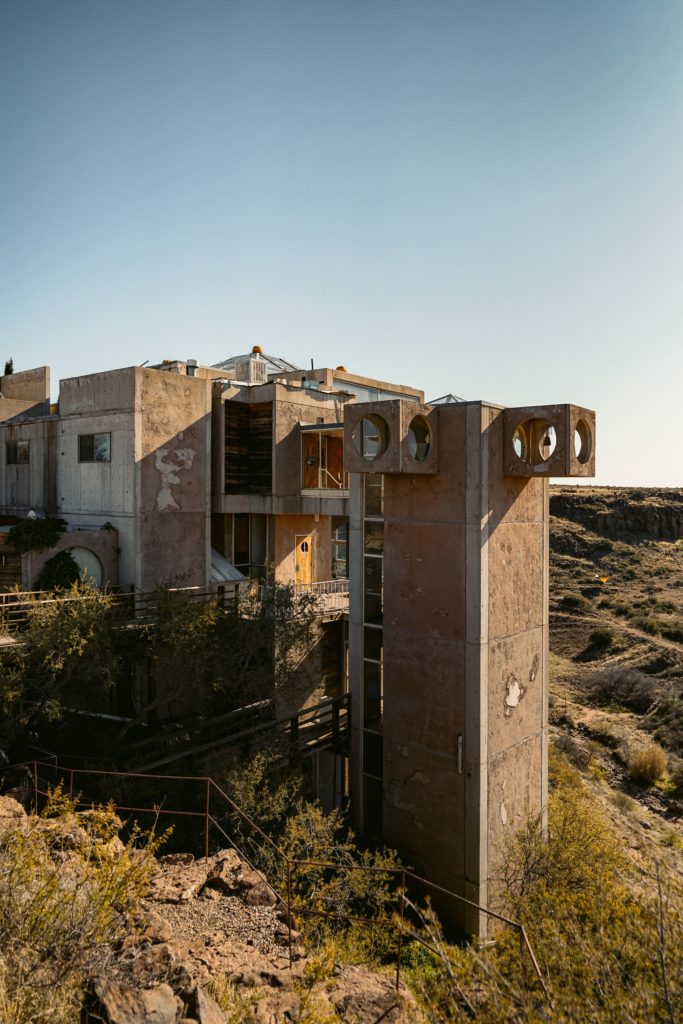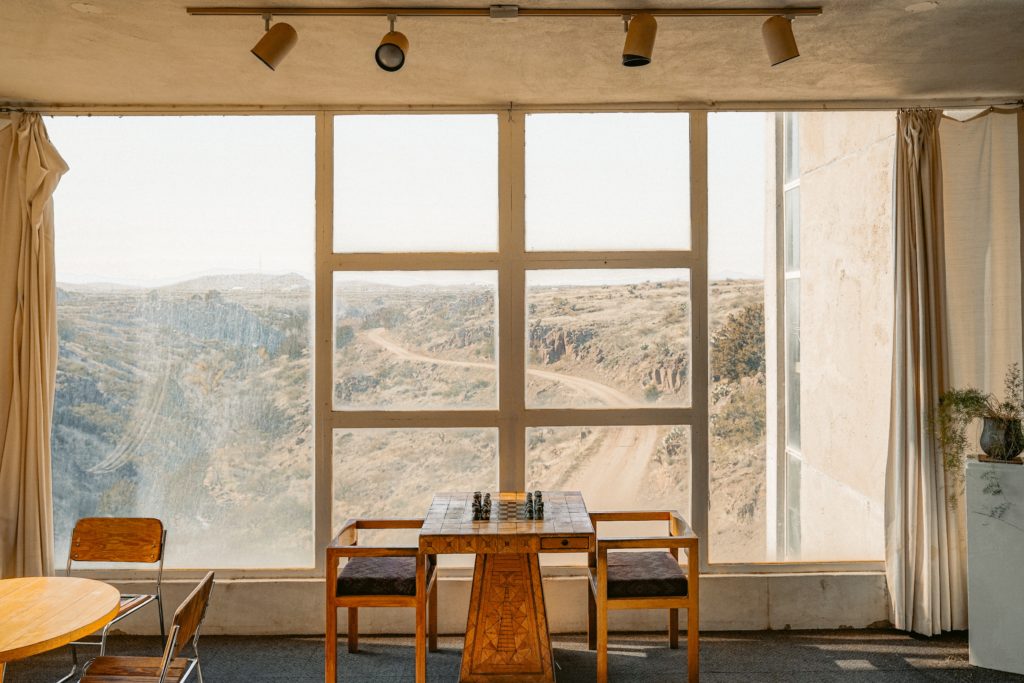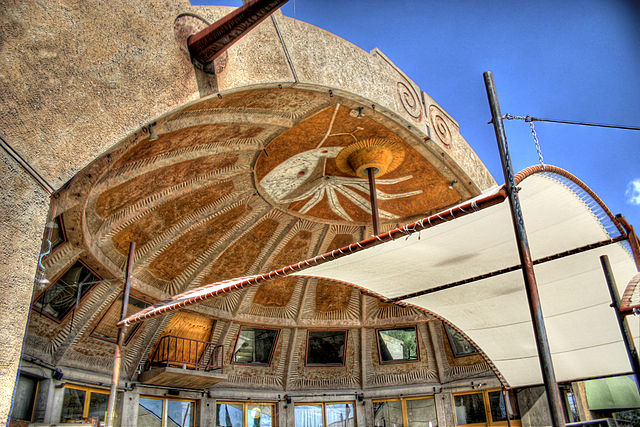

‘The problem I am confronting is the present design of cities only a few stories high, stretching outward in unwieldy sprawl for miles. As a result, they literally transform the earth; turning farms into parking lots, wasting enormous amounts of time and energy transporting people, goods, & services over their expanses. My solution is urban implosion rather than explosion.’
Paolo Soleri, Architect of Arcosanti, https://www.arcosanti.org
Arcosanti was envisaged by Italian architect Paolo Soleri as an alternative to the industrial metropolis, the prototype for his philosophy of Arcology, which synthesized architecture and ecology. Arcology aimed to address unsustainable production, excessive consumption and sprawl by using organisms, organic, compact and metabolically circular by nature, as the model for cities.
Begun in the heat of the 1970s environmental movement, Arcosanti was celebrated for its interconnection with nature, and its grassroots construction efforts (you can find out more in this video about the site). But, today, only about 5% of the project is complete, and the permanent population is usually under 100. Although the construction of Soleri’s vision has continued over the years due to the work of passionate volunteers, Arcosanti operates primarily as a tourist destination and the producer of Soleri Bells (handmade, ornamented bells).
Needless to say, Arcosanti was not meant to be a roadside attraction, but a self-contained city. Built on a sparse hilltop in the Arizona desert, Arcosanti’s massive concrete forms look both primordial and dystopian. There are no roads, and spaces for living, working, and leisure are contained in highly dense, interconnected spaces. Soleri believed that like an organism, cities should be dense, three-dimensional structures. He saw sprawl as the fault of unidirectional expansion (horizontally), which was inorganic. From the vaults to the apses, Arcosanti includes many open-air structures that by their large scale and ambiguous usage allow for the city to accommodate a variety of possible functions.

As part of his Arcological prototype, Soleri designed a new typology, the apse workshop, as an alternative to industrial factory compounds. Although many of his urban forms have never been built, the Ceramics Apse and Foundry Apse are central to Arcosanti’s continued economic viability. They were designed to allow artisans to engage in the full process of their craft, unlike factories that reduce humans to a cog in the industrial machine. Instead of relying on energy-intensive machinery to power the manufactoring of products in an isolated space, the apses utilize natural systems to function. Known as the Apse Effect, the apses’ south facing orientation allows the space to stay cool during the summer solstice when the sun is at a higher angle, and warm during the winter solstice when the sun is at a lower angle. Made of concrete, which is a very dense material, apses also retain heat, which makes the space cool despite being exposed to the desert. Rather than a conveyor belt, or a line of workstations, the Apses are communal, multi-use spaces.
Arcosanti’s dynamic concrete forms defy their own materiality, rising from the earth as if a tectonic shift has pushed them up into the desert sun. Its structures are charged with the organicism that Arcology champions. So why is Arcosanti, in its original conception, unrealized? Like most architects with a vision of utopia, Soleri did not want to make any design concessions that would lower the price tag. Furthermore, Soleri and his cult-like community of creatives set out to build Arcosanti on their own. Soleri’s initiative was emblematic of the decade’s approach to environmentalism, but free labor is only guaranteed so long as people believe in the future they are creating. The Arcosanti of today is not so much an urban laboratory, as a commune for people seeking an alternative lifestyle. It is the only vision of a peaceful city I have analyzed that has actually been realized (albeit on a small scale and in a watered down form). However, this success is a result of Arcosanti’s isolated, small population, which is self-selective. Thus, the community does not have to engage with many of the polarizing issues that have fragmented contemporary cities. If Arcosanti was completed on a city-scale, would it be just another failed ecotopia? Or was Soleri on to something?
What do you think?
- Do you think Arcosanti is a viable urban typology for the 21st century? Or, do you think Arcology is an outdated vision of utopia?
- Why do you think the people building Arcosanti lost faith in a cause to which they were committed? Has there been a general shift in how people view urban experiments?
- Can Arcosanti, in its current form, be classified as a vision of the peaceful city if it does not have to engage with contemporary urban crises due to its small size, isolated location, and self-selectivity?
- Does ‘living in harmony with nature’ help to build other kinds of ‘peace’ into an urban environment?
- What can we learn from Arcosanti about organic, community-oriented, peace-focused urban design that we might apply in other contexts?
If you enjoyed this item in our museum…
You might also enjoy other items connected to The Invisible Urbicide Project, Green Mosul and Hope in a Jar.
Eleni Spiliotes, December 2022